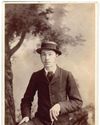
A snapshot is a transient thing, a quick photo shot without thought for technicalities or technique. It’s a picture that seemed important at the time, though often more likely to have been here today, gone tomorrow. Snapshots are rarely works of art and were never intended to be. But inevitably, they are representative of certain times, places and people – and eventually they become slices of social history.
In 1888, inventor, businessman and entrepreneur George Eastman introduced the Kodak, the first use of that name for the world’s first roll-film camera. The sheer simplicity of its use bred a new kind of photographer, one who might never before have thought of owning a camera, but for whom the ability to take pictures without previous experience offered a new liberation. Snapshot photography was born.
In 1900 the Kodak Brownie was introduced, a name that would forever be associated with simplicity of use in countless different styles of camera for nearly a century. The following year, the No.2 version was the first camera to use 120 roll film. Thereafter, the term ‘Box Brownie’ became synonymous with any box-shaped camera, irrespective of its maker. As cameras aimed at professional and keen amateur photographers evolved in ways that would have mystified the humble snapshot photographer, so the technologies were simplified to produce a parallel evolution in snapshot models. It continued through the years with the introduction of myriad simple-to-use cameras, culminating in the highly successful Kodak Instamatic series in 1963, replaced by Pocket Instamatics in 1972 and onto the less-successful disc cameras of the 1980s.
Diese Geschichte stammt aus der July 02, 2024-Ausgabe von Amateur Photographer.
Starten Sie Ihre 7-tägige kostenlose Testversion von Magzter GOLD, um auf Tausende kuratierte Premium-Storys sowie über 8.000 Zeitschriften und Zeitungen zuzugreifen.
Bereits Abonnent ? Anmelden
Diese Geschichte stammt aus der July 02, 2024-Ausgabe von Amateur Photographer.
Starten Sie Ihre 7-tägige kostenlose Testversion von Magzter GOLD, um auf Tausende kuratierte Premium-Storys sowie über 8.000 Zeitschriften und Zeitungen zuzugreifen.
Bereits Abonnent? Anmelden

Calling The Shots: A Queer History of Photography
Offering an unprecedented view of photographic history through a queer lens, this is a wonderful and powerful book, says

Large-aperture standard zoom, too
SONY has also revealed a new premium standard zoom, the FE 28-70mm F2 GM.

Super-fast, high-res Sony Alpha Ai II
SONY has announced its new professional full-frame flagship camera, the Alpha A1 II.

39 awesome accessories
Our round-up of the best accessories we've used and reviewed this year, along with some old favourites. There's something here for every budget, starting from just £7, including tripods, bags, filters and much more

Such a thing as society
This autumn sees the launch of a major new book and exhibition devoted to examining the multiplicities of photography during 1980s Britain. Peter Dench finds out more

Join Club
The sociable Canvey Island Photographic Club is keen to grow its in-person meet ups

Capturing flight
Winners and finalists of Bird Photographer of the Year share their tips for success with Hollie Latham Hucker

140 years of change
AP has become the world’s oldest surviving consumer photo magazine because we have moved with the times, says Nigel Atherton

Preserving history in platinum
A deep dive into the meticulous art of platinum printing, and the collaboration between the Royal Geographical Society and Salto Ulbeek. Mike Crawford explores how they brought historical photographs to life with enduring beauty and precision

Life in the past lane
What was life like for an amateur photographer in 1884? John Wade takes a trip back in time